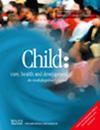Health Literacy and Adherence to Age-Appropriate Childcare Recommendations Among Parents in Northeast Thailand
Abstract
Background
Children of parents who have higher health literacy (HL) have better outcomes. Most studies on parents' generic HL focus on the capability to manage their own health, rather than the capability to manage their child's health.
Methods
Parents of children 0–5 years at the paediatric outpatient department at a university hospital participated in this cross-sectional study by answering a self-administered questionnaire. We used (1) Generic Health Literacy (GHL) Scale for Thais, (2) parent's management and awareness of their child's health-PMATCH, an instrument, which was developed to explore HL, which pertains to the capability to manage their child's health and (3) parents' health promotive practices on age-appropriate childcare recommendations. Cronbach's alpha was used to analyse the internal consistency of HL scales (HL = 0.97 and PMATCH = 0.94) and confirmatory factor analysis was used to analyse the PMATCH scale. Logistic regressions were used to identify associations between HL, PMATCH and parents' practices including dentist visits, exclusive breastfeeding, sleeping on the back, self-feeding and screen time.
Results
Of the 144 parents, 82.8% were female; most parents had fair HL (low 4.9%, fair 56.9% and high 38.2%) and high PMATCH. Confirmatory factor analysis standardized loadings and inter-factor correlations for the PMATCH instrument were highly significant. Parents' HL was found to mediate PMATCH on specific outcomes. Although total HL was not significantly associated with parent outcome behaviours, PMATCH-Practice was significantly positively associated with bringing the child to the dentist regularly (AOR 1.74) and negatively associated with the child sleeping on the back (AOR 0.52). We did not find a significant association between total HL, PMATCH and breast feeding, self-feeding or screentime.
Conclusions
There is a complex interplay between parental health promotive practices, HL and PMATCH. Future studies should invest in further understanding the relationship between HL and PMATCH, and the causes of non-adherence to formulate better-targeted preventive interventions.

 求助内容:
求助内容: 应助结果提醒方式:
应助结果提醒方式:


